Changes in Airport Traffic Ranks
The following chart ranks airports by the number of aircraft departures (including passenger, freight, and unblocked general aviation) from US and Canadian airports yesterday, 14 April, compared to 10 March - both Tuesdays, both from before large impacts from COVID-19 were felt in North America.
ORD, DFW, ATL, DEN, CLT, PHX, LAX remain in the top 10, and have been joined by MEM, SDF, and PHL, which knocked out EWR, BOS, and IAH. All of these airports have seen significant declines in traffic, however those declines have been most profound for passenger carriers; the relative stability of freight traffic from FedEx at Memphis, and UPS at Louisville and Philadelphia, have boosted their ranks significantly. Similarly, Anchorage, where many Asia-US freighters stop for fuel, has increased its rank from 49th to 16th; overall traffic there is down 18%, but that's a much smaller drop than passenger-centric airports have seen.
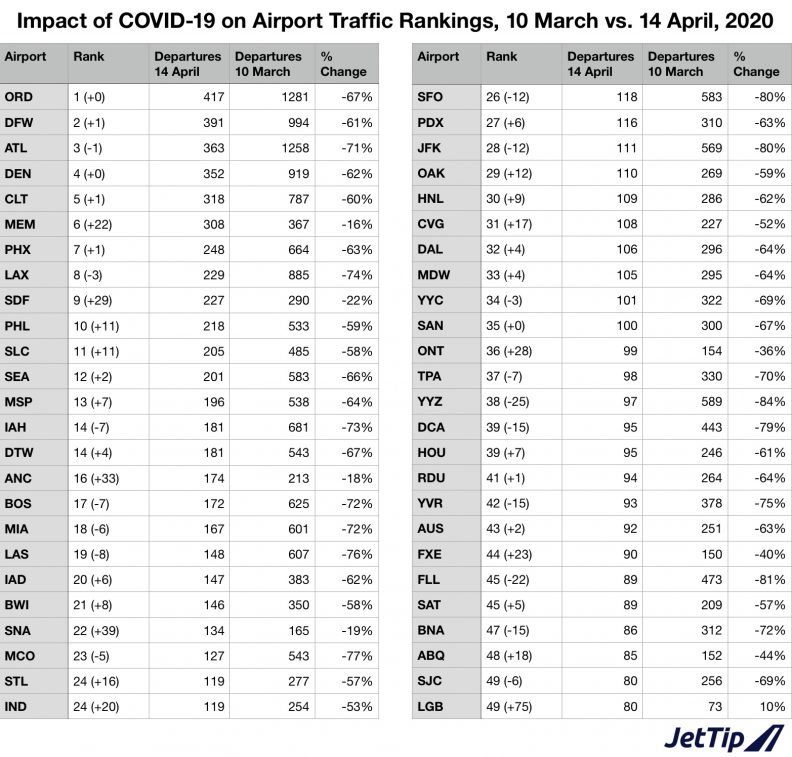
CARES Act Airport Funding
Grants for airport funding in response to COVID-19 have been announced; amounts awarded to large hubs are listed below, if you'd like to dive deeper, the full list of funding can be found in this 66 page PDF.
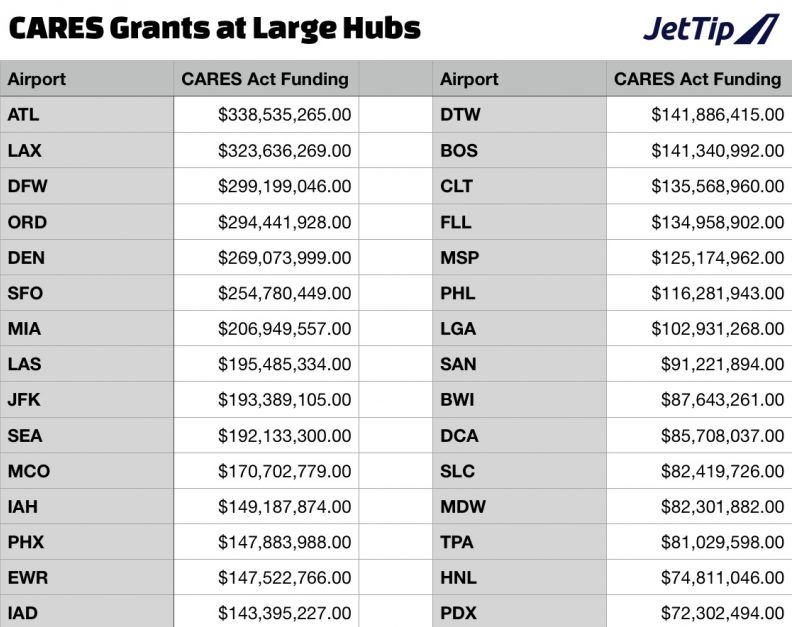
Traffic Graphs
Southwest hits a new in the number of domestic departures since the crisis started, though their percentage drop (-61%) is still relatively high compared to other passenger carriers.
FedEx and UPS have seen increases in their week over week traffic since the crisis started, though their Tuesdays, the busiest day in their weekly cycle, haven't gotten any busier (yesterday I posted about how FedEx's Sunday traffic had increased 22%).
Allegiant, GoJet, JetBlue and Mesa also hit new traffic lows; MCO was the only airport to hit a new traffic low on Tuesday.
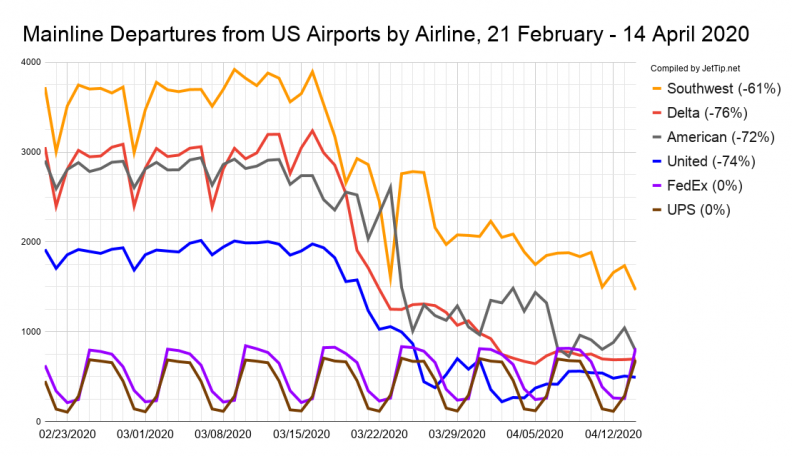
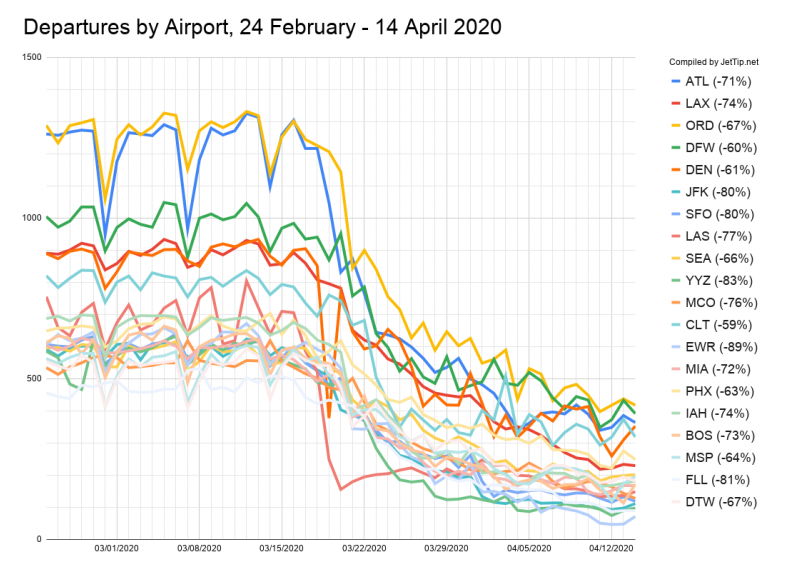
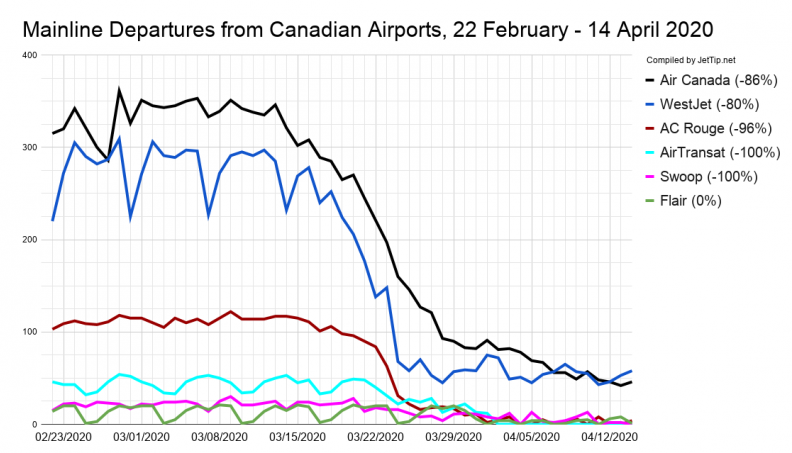
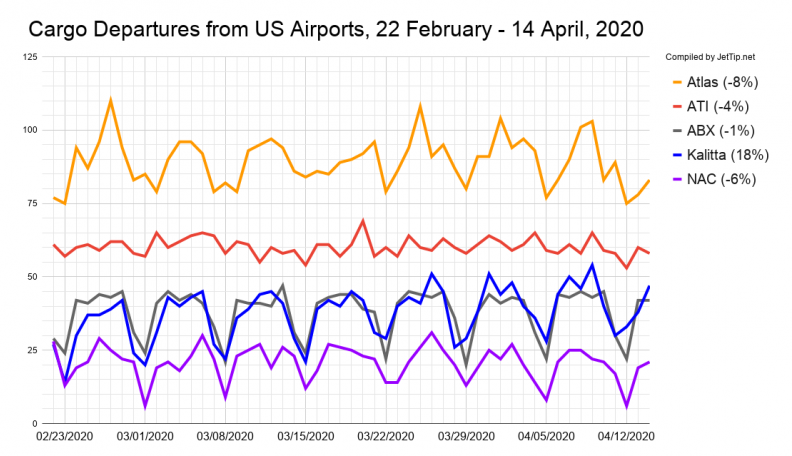
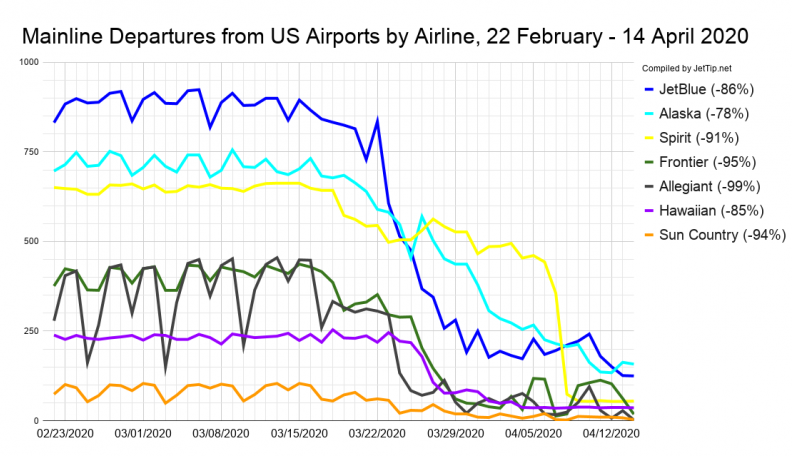
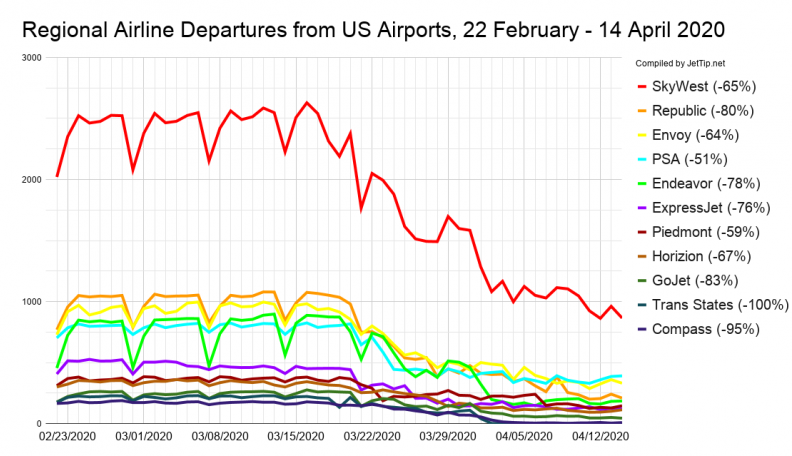
News from Elsewhere
- The last time the US consumed so little jet-fuel was in 1967; Javier Blas
- An-225 to Visit France
- Sun Country hopes to reduce schedule to 4x weekly flights through mid-June; Kyle Potter
- Norwegian Air's UK pilots and cabin crew will not receive April salary; Joanna Partridge, The Guardian
Additional Aviation News Resources
If you're looking to keep tabs on what's going on, there are lots of great places to be keeping track of aviation news.
- JetTip's Aviation News list with tweets from generally reliable sources
- JetTip's realtime diversion tracking page
- Coronavirus Flight Cancelation Tracker
- TSA Sreening Volume
- The Air Current
- PaxEx.Aero
- Cranky Flier's Daily Update
- Ethan Klapper's Bluer Skies
Methodology: Departures by Airline Since Late February
COVID-19 started impacting aviation in China at the end of January, which also impacted the US and Canadian routes to Asia, but large differences in the number of flights being operated by carriers on this side of the Pacific didn't really start adding up until a couple of weeks ago. A few places had been sharing global trends, but I was selfishly interested in an airline by airline breakdown of how significant the impact had been.
The methodology here is to count all flights between 12:00:00 AM and 11:59:59 PM eastern time that departed from an airport in the airline's respective home country (Delta departures from US airports, WestJet departures from Canadian airports, etc.). Since commercial airline schedules are highly cyclical, the percent change is derived by comparing the specified day's count compared to the average of the number of flights each airline operated during three previous "pre-crisis" weeks, 22 February - 13 March.

Nick Benson
Nick lives in Burnsville, Minnesota with his wife and three children. He grooves on railroad and aviation photography, politics, geography, weather, and LEGO. He started JetTip's smart flight alert service in 2017, and is now a full-time avgeek. He can frequently be found atop a step ladder at MSP's Aircraft Viewing Area.
Recent Posts
NFL 2024 - week nine team charter flight schedule
NFL 2024 - week eight team charter flight schedule
Tracking the 2024 US presidential campaign aircraft
NFL 2024 - week seven team charter flight schedule
NFL 2024 - week six team charter flight schedule
News
JetTip Features, Trip Report, Special Liveries, Events, Politics, Press Releases, COVID-19
Airline
Delta, Icelanndair, Sun Country, UPS Airlines